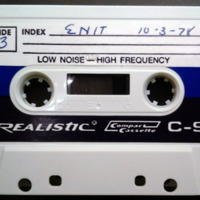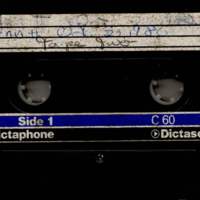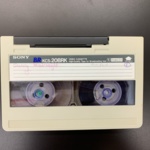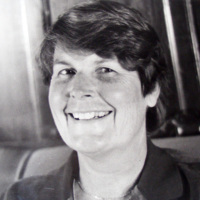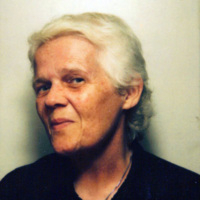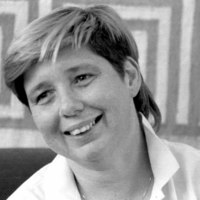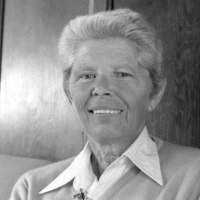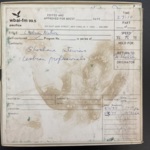
Browse Items (17 total)
Sort by:
-
Dorothy, October 2, 1981 (Tape 1)
Side A: Dorothy discusses her personal life and how she came to discover that she was a lesbian. She talks about her marriage and separation. She discusses her relationships with women, all of which were long-term. Dorothy talks about her job in engineering as a tool designer and the fact that she performed a man's work for a man's salary. She discusses lesbian social life during the 1930s, 1940s, and 1950s and names several popular bars including Eddy's Tavern, Ralph Martin. She talks about her developing alcoholism and the prominence of this disease among lesbians in general, perhaps as a result of their uncertainty about life. Dorothy also talks about butch and femme roles in lesbianism, stating that she doesn't identify herself with either role despite the fact that the butches identified her as one of them.
Side B: Dorothy continues the discussion of roles in lesbianism and the division between the two groups in bars. She says that her "crowd" did not distinguish between these two groups and she ultimately stopped going to bars, partly as a result of the need for role division. She discusses in some depth her problem with alcohol and talks about her membership in Alcoholics Anonymous. She talks about how she decided that she was a lesbian and gives further details about her first relationship. She also speculates on whether or not other people knew she was a lesbian, including her mother and acquaintances such as her landlord. She says that she has never had any problems with people discriminating against her. Dorothy also continues to talk about the social dynamics of bars in Buffalo. -
Enit, October 3, 1978 (Tape 1)
Enit discusses facing her sexuality at the age of 12 and coming out to her family despite her frustration at their lack of acceptance. She goes on to discuss her social life and dating in Buffalo, NY, noting how she used to meet women at bars but that her social activities have changed with age. She discusses her participation in the Erie Picnics held for gay men and women in Pennsylvania. She is 47 at the time of the interview. -
Enit, October 3, 1978 (Tape 2)
Enit discusses how her perception of Lesbian oppression has changed over time. She also talks about acceptance in the work place and how professionals view Lesbians. Enit explains that her personal interests have changed with age and that her hobby is dance. She finishes by discussing her interactions with straight women and the support she gets from her Lesbian friends. -
Dorothy, October 26, 1981 (Tape 1)
Side A
Dorothy discusses lesbians in the military during World War II with regard to her friend Betty, a lesbian marine who feared her phone was tapped. She refers to it as a 'witch hunt'. Dorothy discusses lesbian bars in Buffalo in the 1940s -1950s, and talks about friendships and butch and femme roles.
Side B
Dorothy discusses her break up with her girlfriend of 13 years, Charlotte. She talks about their courtship, sexuality, home life, and their families, who were never formally told they were a couple. While talking about the break up she mentions the deed to a cottage they shared and losing personal property in the breakup. Dorothy mentions seeking help from a lawyer and a lesbian psychologist in the 1950s. Dorothy discusses that she once considered suicide after a breakup.
-
Ann II, October 23, 1980 (Tape 2)
Ann describes what she looked for in a women. Discusses the clothing change among lesbian women. Explains some of her relationship experience with women. -
Judy T., 1978
Judy discusses butch and femme identities, social interactions, and role-play within relationships. She expresses relief over how these once rigid demarcations of identity have become more flexible within the lesbian community. Later, however, she notes "class" differences that continue to striate lesbians as a social group.
The social conditions, the acceptance of lesbians, and the "openness" of homosexuals are compared between New York, Florida, and Toronto. References are made to anti-gay activist Anita Bryant and others who put social pressure on lesbians to stay closeted.
Additionally, Judy touches upon negotiating workplace discrimination and "nosy" neighbors. She briefly mentions her relationship with her family and what it was like growing up in Buffalo.
-
Joan Nestle / Mabel Hampton [undated]
Oral history recording of Joan Nestle. Side A: Joan Nestle speaks about lesbian self-expression and the importance of language to identity. She goes on to talk about her early life and how she was motivated to take a stand against the oppression she saw around her in society, specifically oppression against women and lesbians. Side B: Mabel Hampton takes over as the main speaker and recounts her life story, beginning when she was only one month old. Mabel discusses her early years, including the crucial transition from living with her grandmother to living with her aunt, and how she eventually decided to run away to Jersey City. -
Elaine, April 17, 1980 (Tape 1)
Discussion centers on bars in Buffalo in the late 1950s and into the 1960s, in particular Bingo -
Neighborhood Voices: Sonny Wainwright Interview (Tape 1)
Sonny Wainwright discusses coming out in 1948, navigating the Village bar scene as a young college student with her lover Kelly, and the social life of lesbians in the 1950s. Wainwright found support in the bars as well as her close circle of closeted friends prior to the formation of the Gay Women’s Alternative. -
Rose Jordan Selected Quotes
Rose Jordan discusses her involvement with the New York chapter of the Daughters of Bilitis, as well as her involvement with other women’s political organizations and feminist groups. -
Lois Beeby, Tape 2 of 2, May 9, 1987
Lois Beeby discusses her early experiences and confusion as to recognizing she was a lesbian. She speaks about her role as a member and officer in the Daughters of Bilitis, and the eventual unrest and split in the group, leading to her leaving DOB. She speaks of unrest between gay men and lesbians and the desire for the two to join together as a united front. -
Arcus Flynn, Tape 1 of 1, November 1, 1987
Arcus Flynn discusses her early life and her struggle with isolation and depression, her eventual discovery of the Daughters of Bilitis meetings and the community and friendships she found there. Arcus talks about the early importance of roles assumed by lesbians in the community (butch/femme), her involvement with the Women’s Rights movement, her evolution from Catholicism to born-again pagan spirituality (the Irish triad: truth, knowledge, and nature), and her discovery of herbology and natural healing. -
Rose Jordan, Tape 1, May 23, 1993
Rose Jordan discusses her involvement with women’s political organizations and feminist groups and the schism that existed between 2 generations of lesbian women. -
Helen Ruvelas, May 10, 1987
Helen Ruvelas discusses her involvement with the Daughters of Bilitis during the 1970’s and the strong friendships she developed with some of the women in the group. She also talks about her eventual drift away from the group and its dissolution. -
P.D. Griffin, May 13, 1987
P.D. Griffin discusses her role in the Daughters of Bilitis and her relationship to the lesbian community. She also discusses her interests, which include softball and ukulele. -
Lois Beeby, Tape 2 of 2, May 9, 1987
Lois Beeby discusses her early experiences and confusion as to recognizing she was a lesbian. She speaks about her role as a member and officer in the Daughters of Bilitis, and the eventual unrest and split in the group, leading to her leaving DOB. She speaks of unrest between gay men and lesbians and the desire for the two to join together as a united front. -
Lesbian Nation, April 2, 1974
This recording begins with announcements for upcoming poetry readings located throughout New York City. The next segment is a pre-recorded interview panel that offers insight into the gay professional led by a woman identified only as Shoshana. She discusses her own background and experiences in the workplace and then asks her panelists questions about their experiences and difficulties they face. The panelists go on to discuss their hesitancy and fears of what the repercussions of being out on the job would mean. Continuing on, the panelists discuss societal pressures and the vagaries of workplace policies and the paranoia it can lead to. As the discussion concludes, the focus and fear society has on the sexual aspect of being gay is explored. This broadcast concludes with Martha Shelley discussing her feelings of nostalgia on turning 30.


